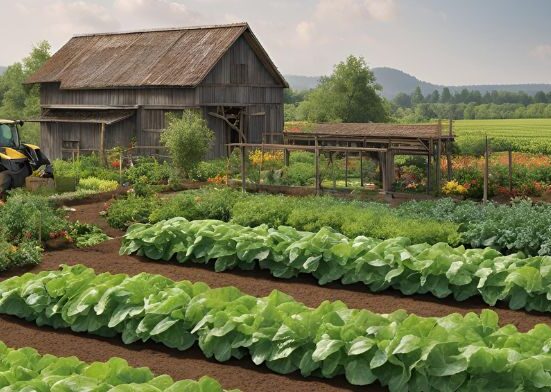Welcome to my blog, where we dive deep into the world of backyard poultry! If you’re considering adding some feathered friends to your homestead or simply curious about one of America’s most iconic chicken breeds, you’ve come to the right place. Today, we’re exploring the Rhode Island Red chicken—a breed that’s as American as apple pie, known for its robust nature, reliable egg-laying prowess, and striking appearance. Whether you’re a novice chicken keeper or a seasoned pro, this guide will cover everything from their historical roots to daily care tips and how to maximize their egg production.
Rhode Island Reds, often abbreviated as RIRs, have earned a special spot in the hearts of poultry enthusiasts worldwide. They’re not just productive; they’re hardy birds that can thrive in various climates, making them ideal for backyard flocks. In this post, we’ll break down their traits, including physical characteristics and temperament, delve into essential care practices such as housing, feeding, and health management, and highlight their impressive egg-laying abilities. By the end, you’ll have a clear picture of why these chickens are a staple in many coops and how to raise them types of cows successfully.
Brief Overview of Rhode Island Red Chickens
 Rhode Island Red chickens are one of the most popular and versatile poultry breeds, renowned for their hardiness, adaptability, and consistent egg production. Originating in the United States, they are prized for their rich, dark red plumage and robust build. These birds are excellent layers, producing large brown eggs almost year-round, making them ideal for both backyard flocks and commercial farming. Beyond their productivity, Rhode Island Reds are renowned for their friendly yet resilient temperament, which enables them to adapt to a wide range of climates and housing conditions. They are relatively low-maintenance, resistant to diseases, and suitable for both free-range and confined environments. Their striking appearance, dependable egg-laying ability, and gentle nature make Rhode Island Reds a favorite among poultry enthusiasts and farmers rhode island red hen alike.
Rhode Island Red chickens are one of the most popular and versatile poultry breeds, renowned for their hardiness, adaptability, and consistent egg production. Originating in the United States, they are prized for their rich, dark red plumage and robust build. These birds are excellent layers, producing large brown eggs almost year-round, making them ideal for both backyard flocks and commercial farming. Beyond their productivity, Rhode Island Reds are renowned for their friendly yet resilient temperament, which enables them to adapt to a wide range of climates and housing conditions. They are relatively low-maintenance, resistant to diseases, and suitable for both free-range and confined environments. Their striking appearance, dependable egg-laying ability, and gentle nature make Rhode Island Reds a favorite among poultry enthusiasts and farmers rhode island red hen alike.
Why They Are Popular
Their popularity stems from a perfect blend of rhode island reds charm, practicality, and accessibility. People are drawn to them for their appealing appearance, ease of use, and versatility across different lifestyles or environments. They often offer reliable performance, low maintenance, and consistent results, making them a favorite choice among both beginners and experts. Social influence and trends further amplify their appeal, as positive experiences and recommendations spread rapidly. Whether for personal enjoyment, functional benefits, or aesthetic value, they consistently meet rhode island hen boer goats expectations.
Purpose of This Guide
This guide explores the key traits of Rhode Island Reds, their care requirements, and what makes their egg production so remarkable. Whether you are considering adding them to your flock or simply curious about this classic breed, you’ll find practical insights to help you appreciate and raise these dependable chickens.
History and Origin of the Rhode Island Red
The story of the Rhode Island Red begins in the late 19th century in the United States, specifically in the state of Rhode Island—hence the name. This breed was developed during a time when American farmers were seeking versatile chickens that could provide both high-quality meat and a steady supply of eggs. The RIR emerged from careful crossbreeding efforts in towns like Little Compton and Adamsville, where breeders combined various fowl to create a superior dual-purpose bird. Key ancestors include the Red Malay Game fowl, renowned for its hardiness and robust build; the Leghorn, prized for its prolific egg-laying abilities; and Asiatic stocks such as Cochins and Javas, which contributed to the breed’s strong frame and exceptional feather quality. Italian Brown Leghorns also played a role, adding to the egg-laying what is a mule genetics.
These crosses were no accident; breeders aimed for birds that matured quickly, were resistant to diseases, and performed well in New England’s variable weather conditions. By the 1890s, the breed was being exhibited under its current name, and in 1904, it was officially admitted to the American Poultry Association’s (APA) Standard of Perfection. This recognition catapulted the RIR to fame, as it quickly became a favorite among farmers due to its high productivity. Interestingly, the breed comes in two comb varieties: the single comb, which is upright with five to seven serrated points, and the rose comb, a flatter, spiked alternative inherited from Malay heritage.
Development in Rhode Island, USA
Rhode Island, the smallest U.S. state by area, has experienced dynamic development blending historic charm with modern innovation. Its capital, Providence, thrives as a hub for education, healthcare, and the arts, while coastal cities like Newport attract tourism and luxury living. The state’s economy has diversified from traditional manufacturing to technology, finance, and creative industries. Infrastructure improvements, sustainable urban planning, and waterfront redevelopment projects reflect Rhode Island’s commitment to growth while preserving its rich heritage. With strong community initiatives, vibrant cultural scenes, and strategic investment in education and business, Rhode Island continues to evolve as a progressive and livable state.
Crossbreeding background (Malay, Leghorn, and others)
The crossbreeding background of certain modern chickens combines traits from Malay, Leghorn, and other breeds to create a versatile and productive bird. Malay contributes size, strength, and hardiness, making the hybrid robust and resilient. Leghorn adds exceptional egg-laying ability, efficiency, and alertness, enhancing reproductive performance. Other breeds are incorporated to balance temperament, growth rate, and adaptability to different climates. This strategic crossbreeding aims to produce chickens that are hardy, fast-growing, and high-yielding, suitable for both meat and egg production. The resulting hybrids exhibit a harmonious blend of vigor, productivity, and resilience, reflecting the careful selection made across generations.
Recognition as a Distinct Breed
The recognition of a breed as distinct marks a significant milestone in its history. It reflects careful breeding practices, consistent traits, and a stable lineage that differentiates it from other breeds. This formal acknowledgment often comes from official agricultural or poultry associations after a thorough evaluation of characteristics such as appearance, temperament, and productivity. Recognition not only validates the breed’s uniqueness but also promotes its preservation, encourages responsible breeding, and raises awareness among enthusiasts and farmers. It ensures that the breed’s qualities are maintained for future generations, highlighting its value in agriculture, hobby farming, and genetic diversity.
Historical Importance in Poultry Farming:
This breed played a significant role in the rise of poultry farming in the U.S., becoming one of the most popular and dependable dual-purpose chickens for rhode island red hens families and farms alike.
Physical Traits and Characteristics
 One glance at a Rhode Island Red, and its vibrant, lustrous plumage will strike you. The breed’s signature color is a deep, rich reddish-brown that’s uniform across the body, often with a subtle greenish sheen in sunlight. However, variations exist—some birds may show black accents in the tail or wings, though excessive “smuttiness” is now considered a fault in show standards. Chicks start with yellow feathers tinged in rusty red, gradually developing their adult coloration.
One glance at a Rhode Island Red, and its vibrant, lustrous plumage will strike you. The breed’s signature color is a deep, rich reddish-brown that’s uniform across the body, often with a subtle greenish sheen in sunlight. However, variations exist—some birds may show black accents in the tail or wings, though excessive “smuttiness” is now considered a fault in show standards. Chicks start with yellow feathers tinged in rusty red, gradually developing their adult coloration.
Physically, RIRs have a sturdy, rectangular body shape—often described as “bricky”—with a broad chest, flat back, and compact feathers that give them a hardy, weather-resistant appearance. This build comes from their Malay ancestry, which also contributes to their hard feathering. They have yellow skin, shanks, and toes, with four toes per foot and no leg feathering (clean-legged). Their beaks are a reddish horn color, and their eyes are reddish brown, adding to their alert expression.
Size-wise, standard hens weigh around 6.5 to 7.5 pounds (about 3 kg), while roosters tip the scales at 8.5 to 9.5 pounds (3.8 kg). Bantam versions are smaller, with hens weighing approximately 850 grams and roosters weighing 1 kilogram, making them suitable for smaller spaces.
General Appearance
Rhode Island Reds are medium to large chickens with rich, dark red to mahogany plumage. They have a sturdy, well-proportioned body and a prominent single comb. Roosters are larger with more vibrant plumage, longer tail feathers, and pronounced wattles and combs.Hens are slightly smaller, with a rounder rhode island red chicks body and more subdued coloring.
Temperament and Personality:
They are generally friendly, calm, and easy to handle, though roosters can be protective. Rhode Island Reds are known for being curious and moderately active foragers.
Hardiness and Adaptability
Exceptionally hardy birds, they adapt well to a variety of climates, tolerating both heat and cold, making them suitable for backyard flocks or free-range systems.
Temperament and Behavior
Rhode Island Reds are often praised for their lively personalities, but they’re not for everyone. Hens tend to be calm, friendly, and curious, making them great for family flocks. They’re confident explorers who love foraging, scratching for bugs, and investigating their surroundings. This independence means they don’t demand constant attention, but they do enjoy human interaction—many owners report their RIRs following them around the yard for treats. However, this assertiveness can lead to bullying in mixed flocks. RIRs often rank high in the pecking order and may target more docile breeds, such as Silkies or Polish chickens. Providing ample space helps mitigate this. Production strains can be flightier and more alert, while heritage ones are generally calmer.
Roosters are a different story. They’re protective and territorial, making excellent flock guardians, but they can be aggressive, especially during breeding season. Not all are mean—some are docile with regular handling from a young age—but families with children might prefer hen-only flocks. Local laws often restrict the keeping of roosters due to concerns about noise and behavior. Overall, RIRs are active and self-sufficient, thriving in free-range environments where they can exhibit their natural behaviors. Daily interaction builds trust, turning them into engaging pets. If you’re new to chickens, start with hens; their energy is rewarding without overwhelming.
Care Requirements for Rhode Island Reds
Caring for Rhode Island Reds is straightforward, thanks to their hardiness, but success depends on meeting their basic needs. Let’s break it down into housing, feeding, and health.
Housing and Environment
RIRs are adaptable to various climates, tolerating both heat and cold well. However, single-comb varieties are prone to frostbite in extreme winters, so apply a beeswax-based salve to combs and wattles, and ensure dry, ventilated coops to minimize moisture. Aim for 3-4 square feet per bird inside the coop and 8-10 square feet in the run to prevent overcrowding and aggression.
The coop should be predator-proof with strong wire mesh, a waterproof roof, and rot-resistant materials. Include roosts (10 inches per bird), nesting boxes (one per 2-3 hens, 12×12 inches), and easy-clean features like slide-out trays. For free-ranging, a fenced yard with 15 square feet per bird allows foraging, which reduces feed costs and improves egg quality. Chicks require a draft-free brooder with heat (starting at 95°F and decreasing weekly), absorbent litter, and protection until they are 8-12 weeks old, when they can be moved outdoors if temperatures are above 55°F.
Feeding and Nutrition
A balanced diet is essential for maintaining health and optimal production. Chicks start with a 24% protein starter feed for the first four weeks, then transition to a 19-20% grower feed until they reach laying age (around 18 weeks). Adults thrive on layer feed (16% protein), supplemented with free-choice calcium sources, such as crushed oyster shells, to produce strong eggshells.
Incorporate treats like scratch grains, veggies, or insects for variety, but limit to 10% of diet to avoid nutritional imbalances. Foraging provides natural nutrients, and automatic feeders keep food clean. Always provide fresh water, especially in hot weather.
Health and Maintenance
RIRs have strong immune systems but require preventative care. Regular coop cleaning prevents ammonia buildup and the spread of pathogens, including weekly cleaning of nesting boxes and monthly deep cleans. Check for parasites like mites or lice monthly—dust baths help naturally.
Common issues include egg binding in older hens (symptoms: lethargy, straining; treat with calcium and seek veterinary care) and respiratory infections resulting from poor ventilation. Quarantine new birds for 3 weeks, vaccinate as needed, and worm regularly. With good management, production strains live 5-8 years, while heritage strains can live up to 10-15 years. Biosecurity is crucial: limit contact with wild birds and refrain from sharing equipment. If a bird seems off—fluffed feathers, reduced eating—consult a vet promptly. Proper care keeps your flock thriving.
Egg Production: The Star of the Show
 Rhode Island Reds are renowned for their egg-laying prowess, a primary reason for their popularity. Hens typically start laying at 18-20 weeks, sometimes as early as 16, and produce significant to extra-large brown eggs—light to dark shades, with size increasing as the hen ages.
Rhode Island Reds are renowned for their egg-laying prowess, a primary reason for their popularity. Hens typically start laying at 18-20 weeks, sometimes as early as 16, and produce significant to extra-large brown eggs—light to dark shades, with size increasing as the hen ages.
On average, expect to lay 200-300 eggs per year, or approximately 4-6 eggs per week during peak laying periods. Production strains typically reach the higher end (up to 300), while heritage birds lay between 150 and 250 eggs. They’re consistent layers, even in winter, although output drops during molts (6-12 weeks in autumn) or periods of stress. To maximize production, provide 14-16 hours of light daily (use artificial lights in winter), a calcium-rich diet, and a stress-free environment.
Laying Capacity
Laying capacity refers to the number of eggs a hen or poultry bird can produce over a specific period, typically measured on a weekly, monthly, or annual basis. It is a key factor in poultry farming, influencing productivity and profitability. Factors affecting laying capacity include breed, age, nutrition, health, and environmental conditions. High-laying breeds, like Rhode Island Reds or Leghorns, are known for consistent egg production, while backyard or dual-purpose breeds may lay fewer eggs. Understanding laying capacity helps farmers plan for feed, housing, and management to achieve optimal egg yield.
Laying Behavior
Laying behavior refers to the patterns and habits of birds, particularly poultry, when they produce eggs. It includes the choice of nesting sites, frequency of laying, and time of day when eggs are deposited. Factors such as breed, age, nutrition, light exposure, and stress levels can influence laying behavior. Observing these patterns helps farmers ensure optimal egg production and maintain the welfare of their hens. A proper understanding of laying behavior enables better management of nesting areas, reduces broken eggs, and promotes consistent, healthy egg-laying routines in flocks.
Breeding and Raising Rhode Island Reds
Breeding RIRs can be rewarding, especially with heritage strains that retain broodiness. Production hens rarely go broody, so incubators are often used to hatch their eggs. If a hen does brood, she’s a dedicated mother, protecting chicks fiercely. Eggs incubate for 21 days; fertile ones cost $12 to $ 24 per dozen. Chicks need a brooder with heat, starter feed, and separation from adults to avoid pecking. For buying, hatcheries like Murray McMurray or Cackle offer chicks ($3.50-$4.50 each) or point-of-lay hens ($15-$40). Start small and ensure good genetics for optimal health. Raising involves monitoring growth, transitioning feeds, and socializing tame birds.
Pros and Cons of Keeping Rhode Island Reds
Pros:
- Exceptional egg production (200-300/year).
- Hardy and adaptable to climates.
- Friendly hens, suitable for families.
- Low-maintenance foragers.
- Dual-purpose potential.
Cons:
- Noisy, especially roosters.
- Can be aggressive or bully others.
- Need space to prevent issues.
- Frostbite risk in cold areas.
- Less broody for natural hatching.
Why Choose Rhode Island Reds?
 Rhode Island Reds are a top choice for backyard flocks and small farms due to their hardiness, productivity, and friendly temperament. Known for their rich, dark red feathers, these chickens are excellent layers, producing large brown eggs consistently throughout the year. They adapt well to various climates and housing conditions, making them suitable for both beginners and experienced keepers. Beyond egg production, Rhode Island Reds are hardy birds with strong immune systems, requiring minimal maintenance. Their calm yet curious nature makes them easy to handle and enjoyable to watch, adding both charm and practical value to any flock.
Rhode Island Reds are a top choice for backyard flocks and small farms due to their hardiness, productivity, and friendly temperament. Known for their rich, dark red feathers, these chickens are excellent layers, producing large brown eggs consistently throughout the year. They adapt well to various climates and housing conditions, making them suitable for both beginners and experienced keepers. Beyond egg production, Rhode Island Reds are hardy birds with strong immune systems, requiring minimal maintenance. Their calm yet curious nature makes them easy to handle and enjoyable to watch, adding both charm and practical value to any flock.
Conclusion:
In conclusion, the Rhode Island Red chicken stands out as a hardy, versatile, and productive breed, making it ideal for both small backyard flocks and larger poultry operations. Known for its striking reddish-brown plumage, resilient nature, and consistent egg-laying ability, this breed requires straightforward care, proper nutrition, and suitable housing to thrive. Its calm temperament and adaptability make it beginner-friendly while rewarding seasoned poultry keepers with high-quality brown eggs. By understanding their traits, meeting their care needs, and maintaining a healthy environment, Rhode Island Reds can become a reliable, long-term addition to any flock, offering both beauty and productivity.
FAQ:
What is a Rhode Island Red chicken?
The Rhode Island Red is a popular American breed known for its hardiness, adaptability, and excellent egg-laying abilities. They are often raised for both eggs and meat, making them a dual-purpose breed.
How good are Rhode Island Reds at laying eggs?
Rhode Island Red hens are prolific layers, producing 250–300 large brown eggs per year. They start laying around 5–6 months of age and continue consistently throughout the year, even in colder months.
What is the temperament of Rhode Island Red chickens?
They are generally friendly, hardy, and easy to handle, though roosters can sometimes be assertive. They are active foragers, making them well-suited for free-range systems.
How long do Rhode Island Reds live?
With proper care, Rhode Island Reds can live 5–8 years, sometimes longer, under optimal conditions.
Are Rhode Island Reds suitable for backyard flocks?
Yes! Their friendly temperament, hardiness, and reliable egg production make them ideal for both small backyard flocks and larger farm operations.







